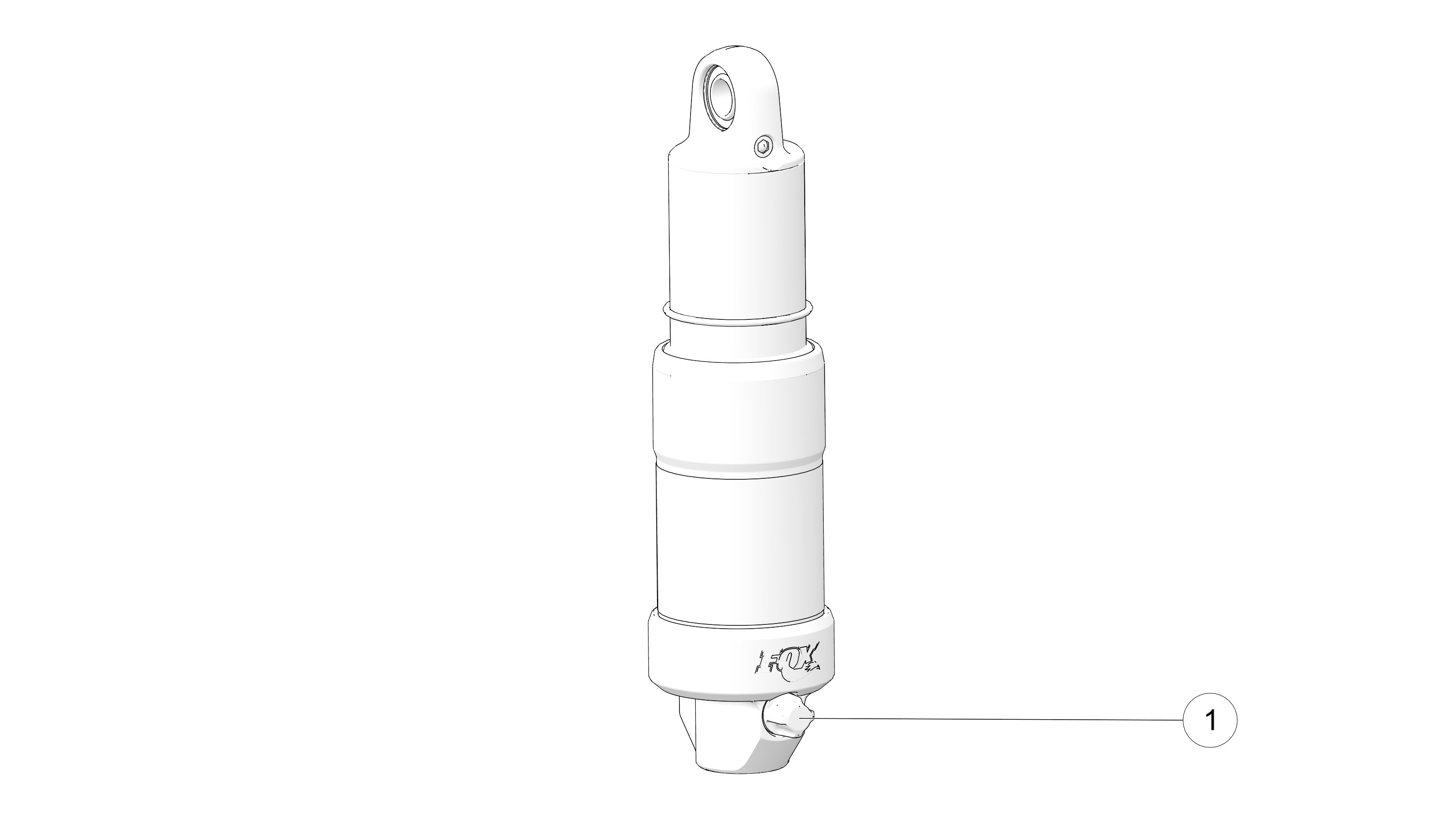Timbersled TSS and TSS QSL (if equipped)
The Timbersled suspension strut (TSS) and the TSS Quick Select Lockout (QSL) are designed to increase your snow bike’s performance and enhance responsive steering and handling. For maximum suspension performance, follow the tuning instructions below.
Adjusting Shock Travel
The TSS and TSS QSL can be adjusted to have the ideal amount of travel for your rider weight and riding style. There is an O-ring on the shock to aid in this adjustment. To dial in the perfect ride, adjust the air pressure using the following steps:
-
Slide the TSS O-ring down to the lowest position.
-
Ride the snow bike for approximately 10 minutes. Then shut down the engine and dismount the bike.
-
Elevate snow bike so the weight of the vehicle is removed from the shock and the TSS shock is at full-extension.
-
Measure how much the O-ring has moved by calculating the distance between the O-ring’s starting position and post-ride position.
-
Adjust the shock air pressure in increments of 25 psi to reach the targeted amount of shock travel or to your rider preference for performance.
SHOCK TRAVEL TABLE
| Model | Maximum Travel | Recommended Travel Range |
|---|---|---|
| TSS | 1.5 in | 1–1.125 in |
| TSS QSL | 1 in | 0.75–.80 in |
Adjusting Air Pressure

The TSS Shock is factory preset at 260 psi. Use a FOX® Float air pump to adjust the spring rate and preload of the TSS Shock.
DO NOT EXCEED the minimum or maximum pressure values specified below. Pressurizing above or below these settings could result in damage to the suspension. Failure to comply may result in injury or damage to equipment.
| Suggested TSS Pressures | |
| Setting | PSI |
| Minimum Setting | 200 |
| Factory Setting | 260 |
| Maximum Setting | 400 |
-
Turn bike on side or elevate so the weight of the vehicle is removed from the shock.
-
Remove the valve cap 1.
-
Thread the pump onto the valve-stem until the pump pressurizes and supplied pressure is readable on the gauge.
NOTICEDuring pressurization of the air pump, the shock will depress 20–30 psi to fill the pump hose. When checking the air pressure, compensate for this loss by adding 20–30 psi to the reading. -
When finished, detach the air pump.
NOTICEWhen tuning your TSS or TSS QSL shock, add or subtract air pressure in increments of 25 psi at a time. Do not get snow or water inside the valve stem as this could cause an air leak in the shock. After each 25 psi increment of adjusted air pressure, slide the O-ring back to the lowest position and ride your snow bike for approximately 10 minutes before rechecking shock travel distance.
TSS QSL Compression Adjustment
The TSS QSL is equipped with a quick select compression adjustment. This will adjust the ride comfort and rate at which the shock travels. There are the following settings:
-
Setting 1 or the softest is intended to let the shock travel quickly, allowing for the suspension to soak up small trail chatter or smaller bumps while riding on the trail.
-
Setting 2 or middle is a medium compression setting to slow down the shock travel to allow for larger whoops on the trail and to help hold the geometry of the kit to the bike steady during off trail or while traversing larger terrain.
-
Setting 3 or firm or Lockout, is intended to hold the shock at the top of the stroke. Even though this is a lockout setting the shock will still travel when encountering a high load to protect the internals of the shock from any damage. This setting is intended for deep snow, off trail riding. This will hold the geometry of the bike to the kit at the most optimal for deep snow riding. This is also intended to be used during really large jumps or bumps while riding as it is the stiffest setting.
To adjust:
-
Shut off bike engine.
WARNINGThe adjustment clicker knob may be close to hot components, never attempt to adjust the TSS QSL setting while the motorcycle is running or still hot from running. -
Allow the bike engine to cool of before attempting to adjust the clicker knob.
-
Adjust the clicker knob to the desired setting.